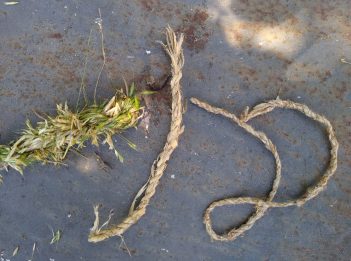You might know the pawpaw tree for its delicious yellow fruit, but did you know that this tree has a long and interesting history? Nature Interpreters Corinne and Caroline delve into the wild history of Ohio’s state fruit.
Read moreOver 100 different butterfly species have been observed in the Cincinnati area. How can you tell them apart when they’re flying about? Nature Interpreter Luke shares how to identify butterfly species and where you can spot some in Great Parks.
Read morePrairie flowers are at the peak of blooming in mid-summer. Among them, royal catchfly stands out – in more ways than one. Director of Programming Amy shares what makes this bright red flower the royalty of the prairie.
Read moreYou may not be accustomed to thinking of yards as important habitats, but wildlife will make use of any space that meets their needs. Nature Interpreter Lisa shares some tips and steps that you can take to turn your yard into a haven for native wildlife – by using native plants.
Read moreThere’s a reason that native wildflower jewelweed is also known as touch-me-not. Director of Programming Amy shares why these natural spectacles are the jewels of summer blooms and how you can identify them on your next hike.
Read moreTry your hand at a different kind of nature craft! Follow along with Conservation & Parks Technician Ethan, who shows that all you need is fibrous plant material to learn this simple rope-making technique.
Read moreWhile many people don’t like insects that sting, bumblebees play a vital role to our environment. Director of Programming Amy shares why bumblebees aren’t just important pollinators, they’re adaptable.
Read moreThere’s no time like spring to see the beauty of wildflowers. Director of Programming Amy shares the facts on this fascinating flower that blooms when the weather begins to heat up, wild columbine.
Read more








